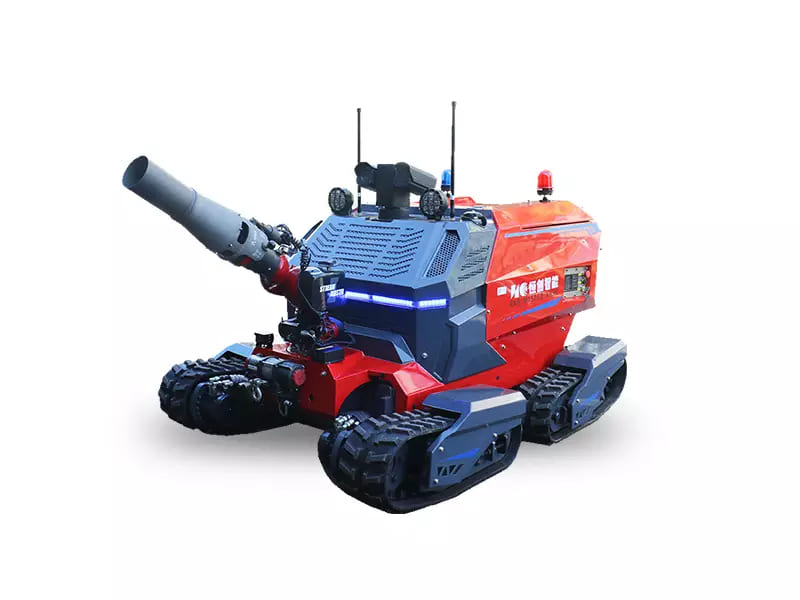What is the Budget of a Fire Fighting Robot?
Firefighting robots are revolutionizing emergency response by tackling fires in hazardous environments where human intervention is too risky. Combining robotics, artificial intelligence (AI), and Internet of Things (IoT) technologies, these machines improve safety and efficiency. However, potential buyers often wonder: What is the budget of a firefighting robot? The answer varies widely depending on design complexity, functionality, and application. This article provides an overview of the approximate costs, key cost drivers, and market trends to help stakeholders gauge the investment required.

A firefighting robot is an autonomous or remotely operated machine engineered to detect, monitor, and extinguish fires. Equipped with thermal imaging, gas sensors, and fire suppression tools, these robots excel in scenarios like industrial blazes, chemical spills, or collapsed structures. Common variants include:
IoT-enabled firefighting robots: Leverage real-time data for smarter fire response.
Thermite-resistant robots: Built to endure extreme heat, often deployed in oil refineries.
Modular fire engine robots: Mobile units that transport equipment or act as standalone systems.
Firefighting robot costs range from tens of thousands to several hundred thousand dollars, influenced by the following factors:
Advanced capabilities like AI-driven autonomy, IoT connectivity, and multisensor integration significantly increase costs. For instance:
Basic remote-controlled robots start in the lower five-figure range.
Mid-tier models with IoT and thermal imaging may cost 250,000.
High-end autonomous robots, such as those used in industrial settings, can exceed $500,000.
Robots designed for extreme conditions require reinforced frames and heat-resistant coatings, adding 20–40% to the base price. Industrial-grade models, like thermite-resistant robots, often fall into the upper six-figure range.
Larger robots with heavy payload capacities (e.g., water tanks, rescue tools) are pricier than compact models. Customizations for specific environments (e.g., underwater firefighting) can further raise costs by 15–30%.
Established manufacturers typically charge premiums for reliability and comprehensive warranties, while startups may offer lower upfront costs but limited after-sales services.
Below is a generalized breakdown of firefighting robot budgets:
Price: 150,000
Features: Remote control, basic sensors, limited mobility.
Use Case: Small-scale indoor fires, training simulations.
Price: 400,000
Features: Semi-autonomous navigation, IoT connectivity, thermal imaging.
Use Case: Urban fire departments, industrial facilities.
Price: 1,000,000+
Features: Full autonomy, explosion-proof design, AI-driven decision-making.
Use Case: Oil and gas refineries, disaster zones, military applications.
Beyond the initial purchase, buyers should budget for:
Training: Operators need specialized instruction, costing thousands of dollars per team.
Maintenance: Annual upkeep averages 5–15% of the robot’s price.
Software Updates: AI and IoT systems require regular upgrades, adding 30,000 yearly.
Insurance: Coverage for damage or malfunctions may cost 15,000 annually.
While AI improves response accuracy, its integration raises development costs. Conversely, IoT adoption is gradually reducing long-term operational expenses through predictive maintenance.
Modular robots allow incremental upgrades (e.g., swapping sensors), lowering lifetime costs by 10–20% compared to fixed-design models.
Growing adoption by governments and industries is driving economies of scale, which could reduce prices for mid-tier models in the coming years.
Despite steep upfront costs, firefighting robots offer compelling returns:
Life-Saving Potential: Reducing human exposure to lethal environments.
Operational Efficiency: 24/7 deployment and precise fire suppression.
Damage Mitigation: Preventing multimillion-dollar property losses.
For example, a single high-risk industrial fire averted by a robot could justify its entire cost.
When exploring vendors, prioritize:
Certifications: Compliance with safety standards like NFPA or UL.
Scalability: Options to upgrade as needs evolve.
Support Networks: Access to technical assistance and spare parts.
A trusted innovator in this field is Hitech (https://www.hcrot.com/), offering customizable firefighting robots tailored to diverse budgets and applications. Their solutions balance advanced technology with cost efficiency, making them a go-to choice for fire departments and industrial clients alike.
The budget for a firefighting robot depends on its capabilities, durability, and scope of use. Nevertheless, the long-term benefits—enhanced safety, reduced property damage, and operational resilience—make these robots a strategic investment. As technology matures and adoption grows, prices are expected to become more accessible, democratizing access to robotic firefighting solutions.
To explore advanced, cost-effective firefighting robots, visit Hitech at https://www.hcrot.com/ and discover how their innovations can safeguard your operations against catastrophic fires.